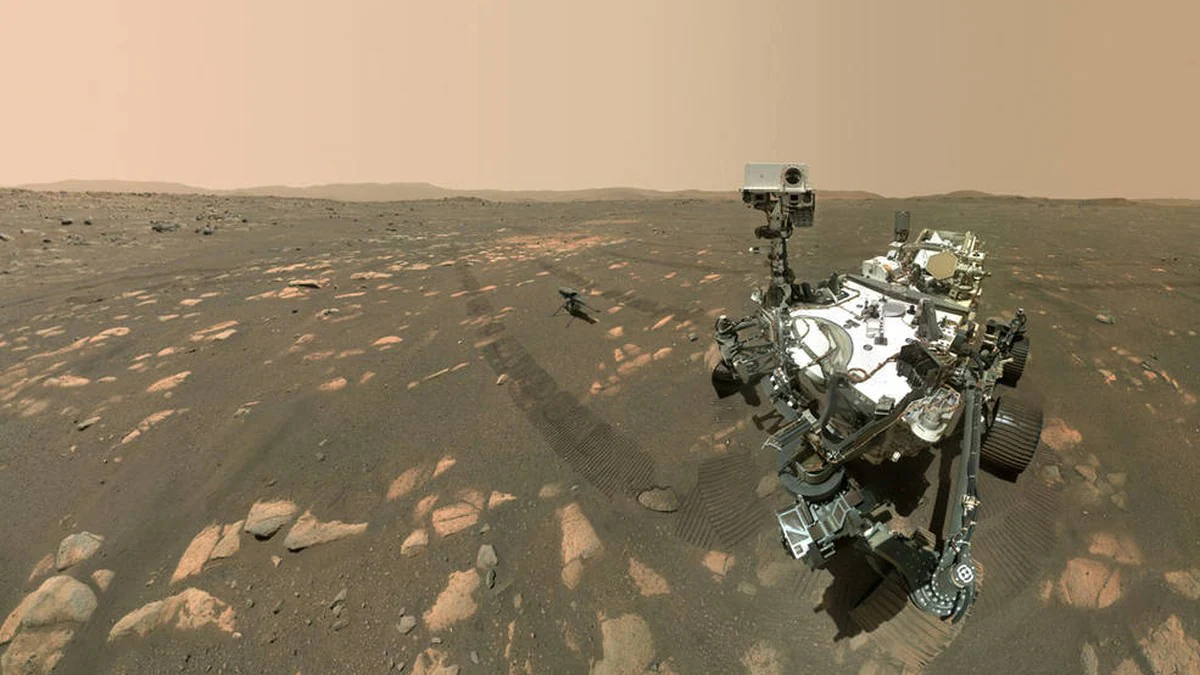On April 6, NASA’s Perseverance rover took a historic selfie beside the Ingenuity copter on the Martian surface. It used a camera, called WATSON, at the end of its robotic arm to snap the shot. Surprisingly, when the final image was released by the US space agency, the robotic arm was not visible and it made viewers wonder how the “selfie” was taken. Now, NASA has explained how the complex feat was achieved. It said the rover took 62 individual images that were then stitched together into a single selfie.
The process is more complex than it sounds. In a blogpost, NASA shared the entire process. Scientists used enough images and overlaps so that when the final image was created, they did not have to include the arm. They use these selfies to check wear and tear on the rover and also understand that these spectacular images can inspire a generation of space enthusiasts.
In a video shared by NASA’s Jet Propulsion Laboratory, the space agency showed the sequence in which Perseverance took the 62 individual images with its WATSON camera.
The video shared with the blog had the sound of the robotic arm twisting and maneuvering to take the images. Vandi Verma, Perseverance’s Chief Engineer for Robotic Operations, explained the difference between a selfie taken by a human and the one taken by the rover. She said that even with the robotic arm fully extended the camera cannot cover the entire rover in a single image as the WATSON camera is designed to capture close-up detail shots for scientific research. So scientists took multiple images and then stitched them together for the selfie.
Verma worked as a driver for NASA’s Opportunity and Curiosity rovers. She also helped create Curiosity’s first selfie snapped on October 31, 2012. This image was composed of 55 high-resolution images.
“When we took that first selfie, we didn’t realize these would become so iconic and routine,” said Verma.
A key objective of the 2020 Perseverance mission is astrobiology, including the search for signs of ancient microbial life.



Leave a reply